What is Galicia's Ribeiro region like?
Steep colourful hills plunge into the abyss of the earth. Grassy knolls and valleys with ever-changing colours surprise travellers in different ways depending on the time of year. The dense vegetation seems to be crowned with a wonderful pinkish halo.
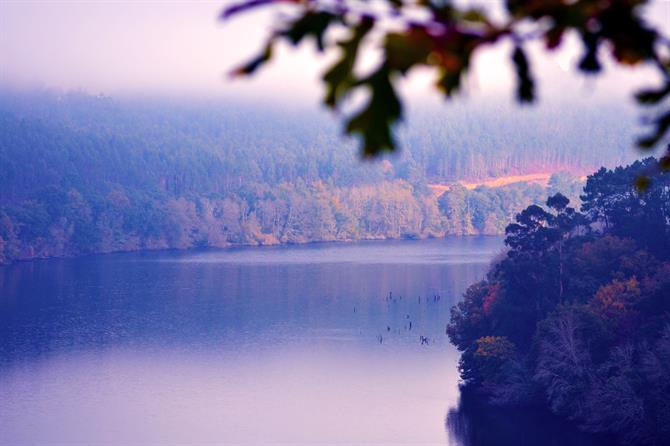
Pleasant groves of oak, pine, chestnut, birch, willow and alder trees seem designed especially for the delight of birds and visitors. Romanesque churches and splendid manors appear along the route with admirable consistency. Monumental crosses stand in endless bloom alongside these churches and within squares as if roses of solid stone.
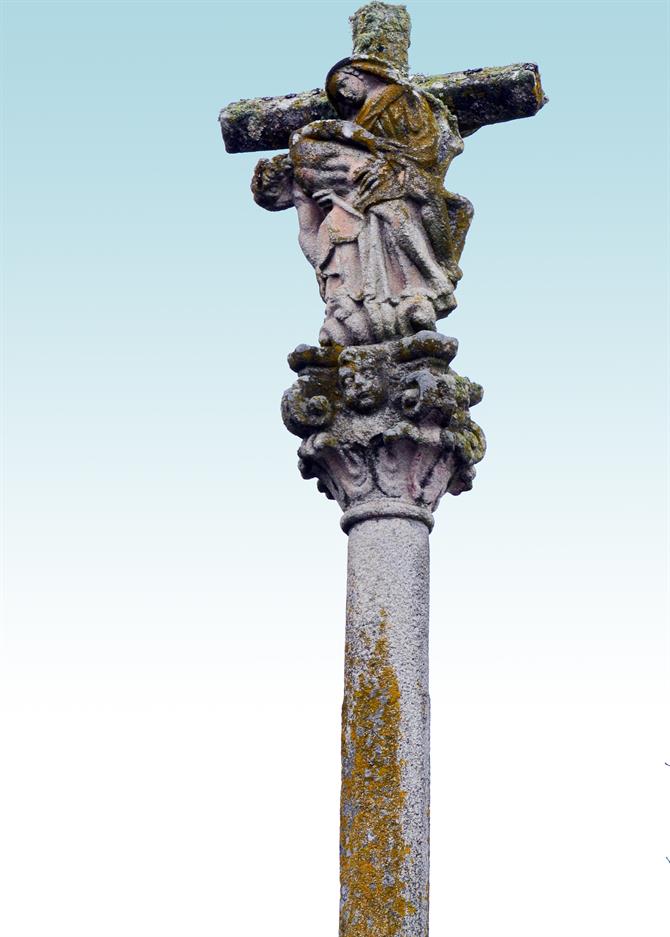
Ancient forts speak of the people of far-off times. Incredible bridges attest to the hospitable and friendly disposition of these lands since time immemorial.
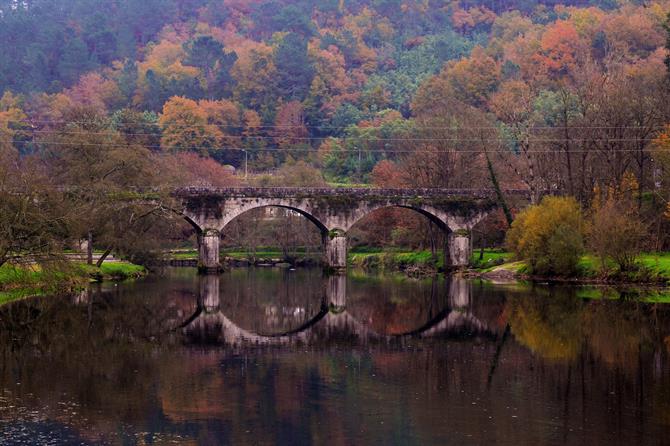
And always and at all times the presence of two elements transcend mere physical dimensions to establish themselves as symbolic references of the region: the water and the wine, the real alpha and omega of an ancient world that, although there are no giants, dwarves, elves and hobbits, provides no less charm than Middle Earth.
The Ribeiro region is an intoxicating paradise and the starting point of a series of trips around Galicia and neighbouring regions.
The Ribeiro Region
The Ribeiro Region is the most traditional wine region of Galicia.
Our route starts at Oseira. Oseira does not belong by law to the Ribeiro region, but there are many reasons why it is a must-visit and is still considered to be closely linked to the land.
There are various monasteries in the area, many of them dedicated to the production of wine.
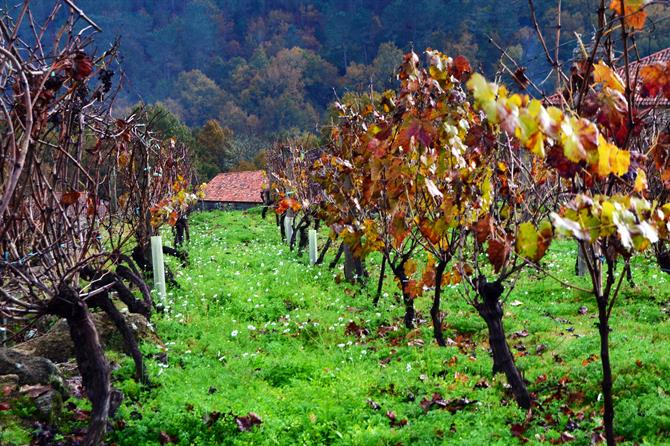
The Oseira Monastery
Located in a parish of San Cristovo de Cea, home to 3000 inhabitants, the Oseira Monastery was the first monastery of the Cistercian Order founded in Galicia in 1141. It is nestled in the intricate Oseira river valley and can be reached by taking a winding road that runs through the valley. The abbey rises to sight majestically and is integrated within the admirable environment.
The monastery was dramatically expanded following donations from kings including Alfonso VI. It knows how to put the area's richnesses into value, all activities beginning with natural resources and artisanal traditions in mind.
The monks of Oseira embody these traditions completely. With expertise in milling and baking, Cea ended up becoming known as the Villa del Buen Pan, the "Town of Good Bread". Galicia is famous for its flavours and textures, and the bread of Cea is one of the few breads in Spain that has a protected geographical indication (don't forget to buy a loaf on your way to Oseira!).
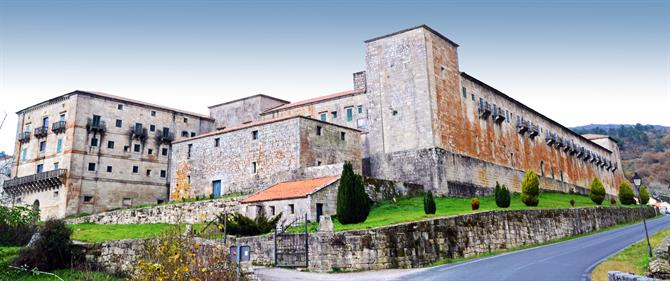
This monastery soon became one of the richest and most powerful of the northern peninsula, transforming into the hub of all commercial transactions in the current regions of Ribeiro and Carballino. It is known that the development of Ribeiro wine dates back to very ancient times, before the arrival of the Romans there were the Cistercian monks during the XII and XIII centuries; they had the impulse to start a life of planting and cultivation in areas bathed by the Miño river.
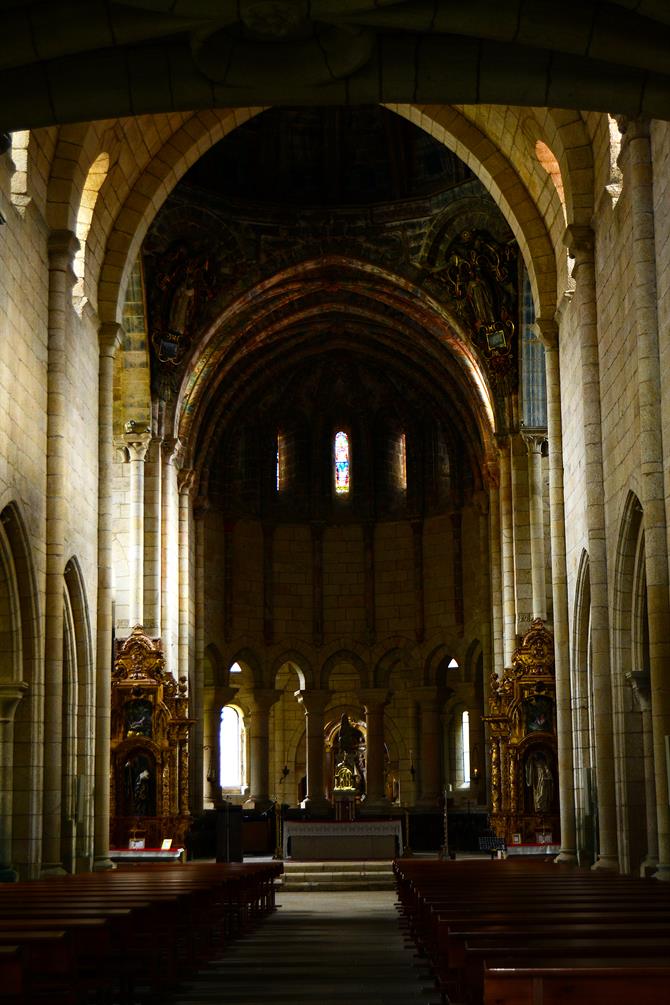
The monumental monastery consists of architectural constructions from different periods. The Renaissance modifications and restorations are especially notable.
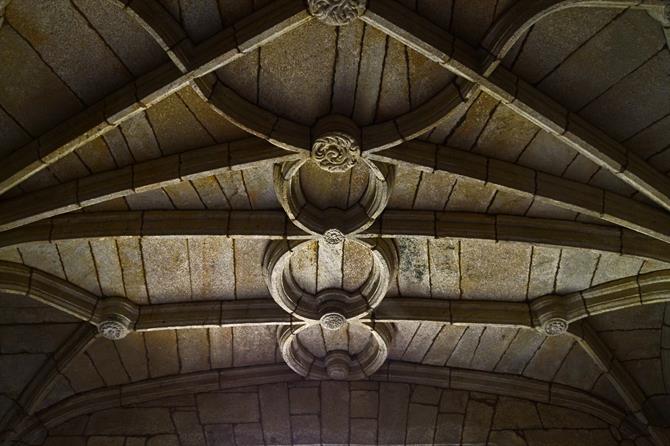
Highlights include the monastery's three cloisters and the abbey church from the first half of the thirteenth century, a unique example of Cistercian architecture unparalleled in the Iberian peninsula. Cistercian architecture is a pure and levitating style that "verticalizes" the rigour of the stone, leaving behind the Romanesque and possessing sufficient features to be not be merely considered a prelude to the Gothic period.
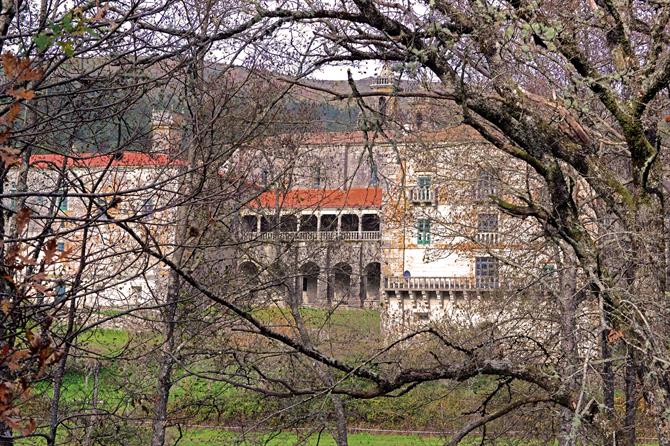
Carballiño
The distance between Oseira and Ribadavia, the fascinating capital of Ribeiro, is 35 kilometres. Along the way is Carballiño, a town with modern buildings where a packed octopus festival (Festa do Polbo) is held every summer.
The best Galician octopus (which is to say the best in the world) can be had here at 70 kilometres from the sea. This paradoxical fact shows off the uniqueness of Oseira, and the appetites of the monks.
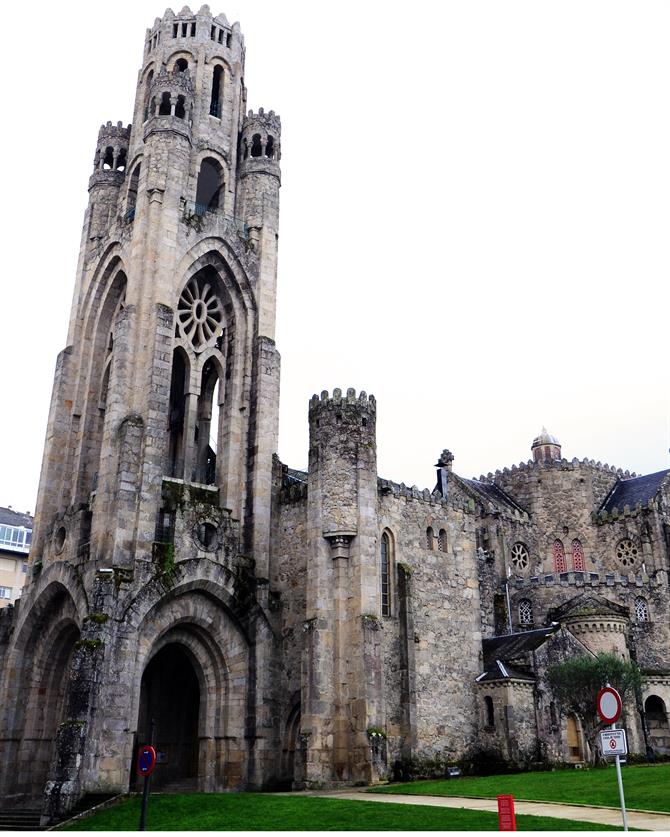
While trying the varied culinary delights offered by the city, one should make a stop in Carballiño to admire the Temple of Vera Cruz. This work bears the unmistakable signature of Antonio Palacios, a great architect who, among many other things, renewed the image of Madrid, moving its undaunted nineteenth-century provincialism towards an aesthetic path that many others continued. The palaciana revolution was based upon the lofty Porriño granite and, for this reason, a reminiscent Palacios said on his deathbed that he "found a city of brick and changed it to a city of granite".
Some of the best-known buildings in Madrid are the works of this Galician architect, starting with the colossal Palacio de Comunicaciones, now the city hall.
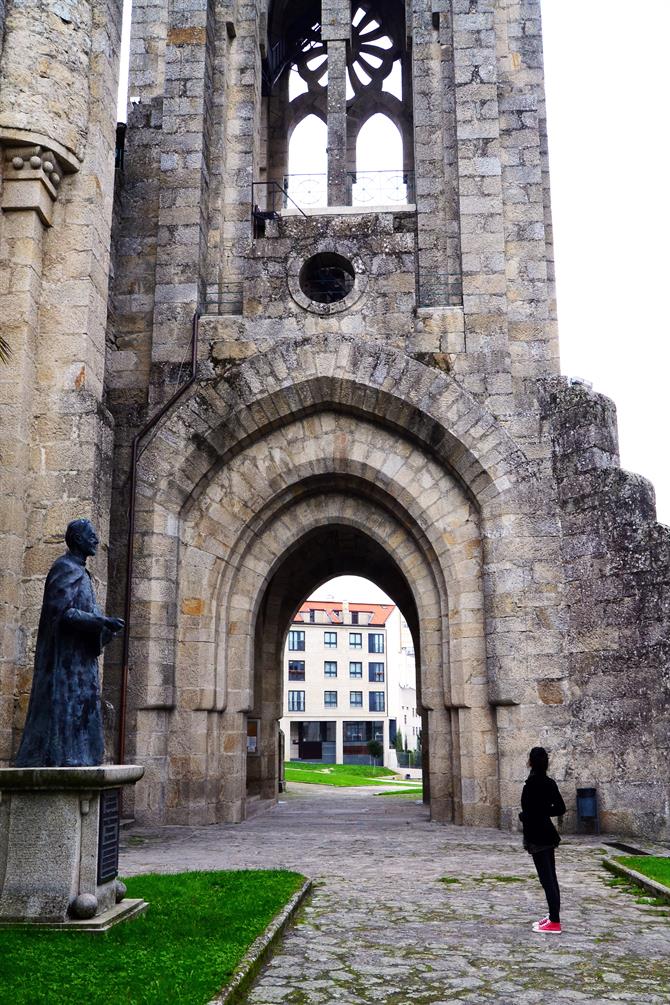
Palacios was always deeply linked to Galicia and completed many projects in the region, especially in the area of Vigo.
The Temple of Vera Cruz presents a brilliant amalgam of styles from Romanesque to Gothic, combinations of neo-traditionalist and medievalist characteristics with a new kind of aesthetic that could be coined Atlantist expressionism. In short, it is a must-see.
Ribeiro's water route
Galician novelist Álvaro Cunqueiro referred to Galicia as the land of a thousand rivers. These rivers come in all sizes. There are those that are tributaries flowing into estuaries reaching the sea; this includes the Xallas, a unique case in Europe of a river that empties itself into the ocean falling from an impressive waterfall of over 100 metres high.
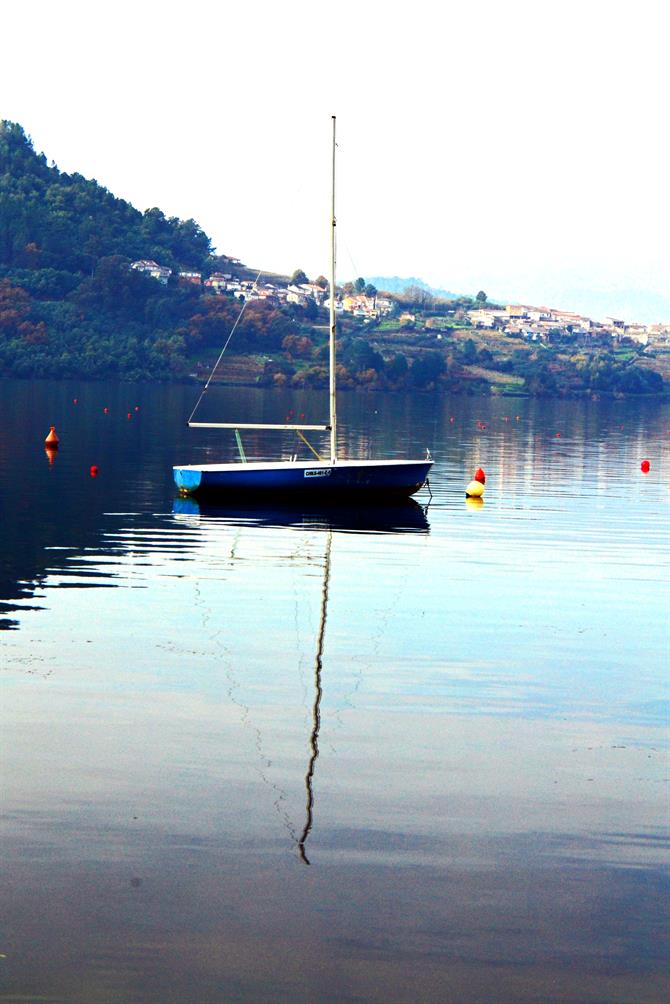
Ribeiro has a fluvial soul. The rivers of the region interweave through a circulatory system of veins and capillaries that carry water to all villages in the area. The Oseira river for example, flows into the Arenteiro, which in turn flows into the Avia, which does the same into the Miño, as if it were a continuous set.
There are three main rivers. The Avia abruptly runs through the region from north to south, resulting in a landscape of deep valleys that meet with the Miño in Ribadavia. Meanwhile, the great Galician river gently crosses the lands of Riberio coming from the southeast. Shortly before leaving the region, the Miño receives the Arnoia on its left bank.
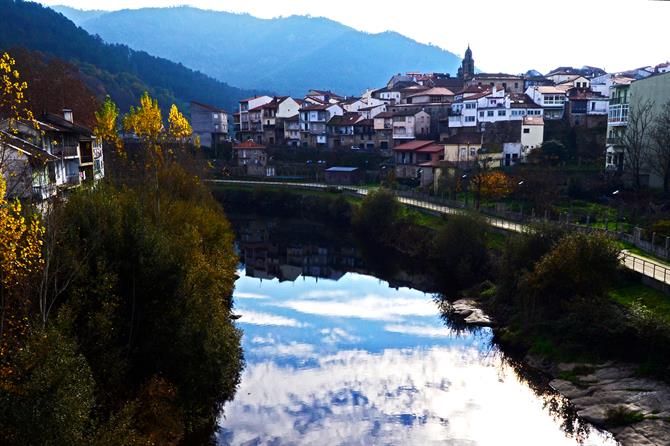
In this stretch of the Miño there is a catamaran route that allows one to peacefully admire the beauty of the valley from another perspective. For water sport lovers, Castrelo of Miño, with its marina is a pleasant surprise. The vast amount of water and rivers is what makes the practice of activities such as rowing, sailing and canoeing possible. All this takes place in a powerful natural setting, surrounded by vineyards and the always watchful silhouette of the church of Santa Maria.
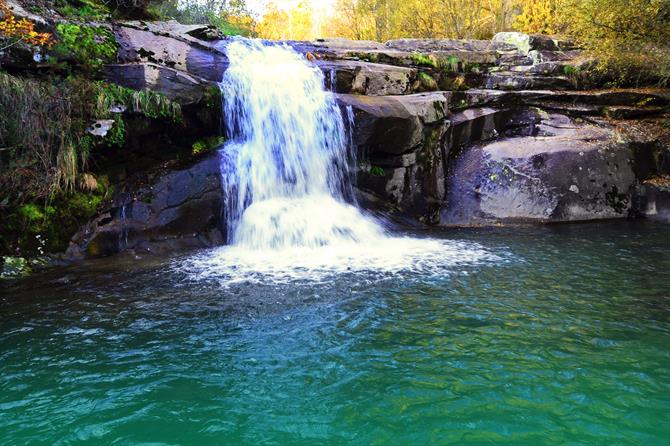
For the more adventurous, the Cerves, passing by Melón, is a must. It is a steep river course, full of almost-inaccessible canyons, waterfalls and sublime pools. The steepness of the course invites adventure sports like canyoning. Remember that the gorges are not without danger and you need to take extra security precautions.
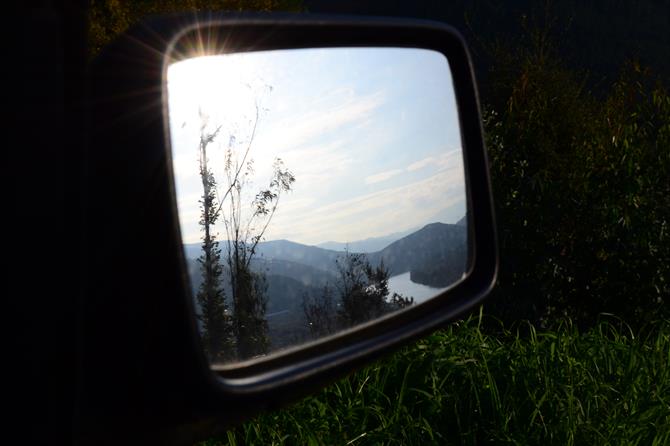
At this point in our route, it seems reasonable to stop and catch our breath. Stay tuned, we will continue our visit of the Ribeiro region with a part II coming very soon. Some of the highlights of the upcoming visit will see us getting to know the oenological secrets of the area, visiting one of the largest forts on the peninsula and discovering the beauty of stately homes set in the midst of forest landscapes.
